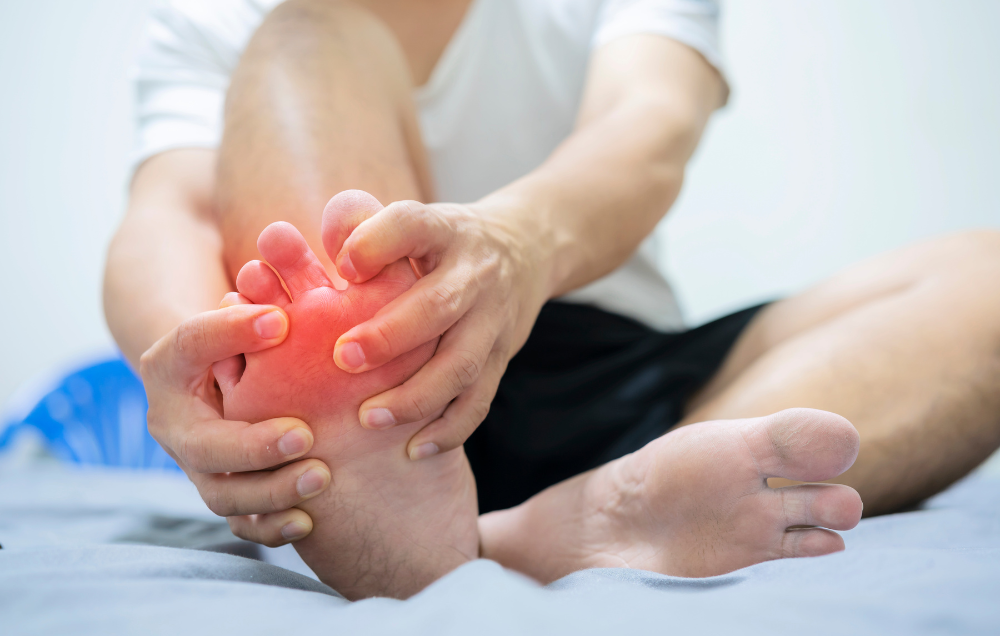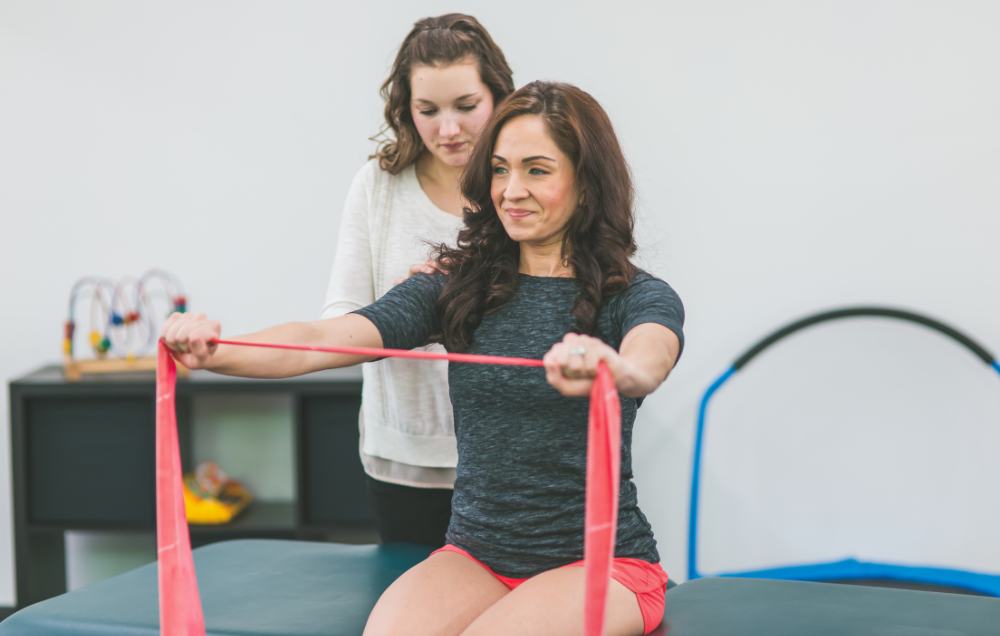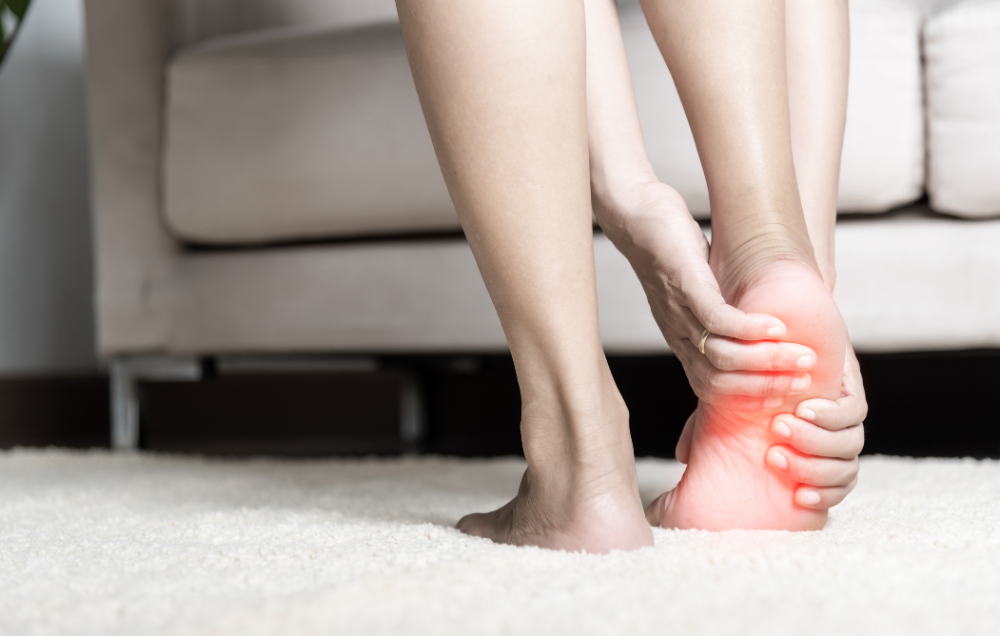Contents
Your feet are meant to carry up to six times your body weight as you walk throughout the day. So when you feel an ache with each step, it can have a significant impact on your ability to complete your day-to-day activities. While pain in any part of your feet can be frustrating, let’s focus on pain in the back of your heel.
Pain in the back of your heel is one of the most common places to experience foot pain, as it gets put through a lot of daily wear and tear. It consists of the largest tarsal bone, known as the calcaneus, as well as many ligaments and muscles. If you’re feeling pain in the back of your heel, also known as posterior heel pain, it can be helpful to learn about the possible causes of the issue. Then you can collaborate with your health care providers to determine the best treatment options to address them.
6 possible reasons that you’re feeling pain in the back of the heel
It can be easy to try to brush off any type of pain as “no big deal,” but feeling pain in the back of your heel can interfere with your mobility and overall quality of life. If you’re experiencing consistent or worsening heel pain, talk to your general practitioner or podiatrist. They can carry out evaluations and diagnostic tests to determine the likely cause of your pain.
Here are six potential causes of pain in the back of your heel that you may be diagnosed with:
- Plantar fasciitis — There’s a band of tissue that runs along the bottom of your foot, called the fascia. This tissue connects your heel bone to your toes to support your arch. If it becomes overstretched or strained, it can lead to micro-tears, causing pain in your heel. The pain may worsen after resting for a long period of time. Other symptoms of plantar fasciitis include difficulty raising your toes and mild swelling. The condition can be caused by repetitive movements, flat or high arches, and unsupportive footwear.
- Achilles tendinitis — The Achilles tendon is the largest tendon in your body and connects your heel bone to your calf muscles. The tissue can become inflamed, leading to pain in your heel, ankle and the back of your lower leg. It can also cause stiffness and reduced mobility. Achilles tendinitis can be the result of placing repetitive or severe stress on the tendon from exercise or spending extended amounts of time on your feet at work.
- Bursitis — A bursa is a fluid-filled sac that works as a cushion between bones and surrounding soft tissue. The retrocalcaneal bursa is located between your Achilles tendon and heel bone. Bursitis, or inflammation of the bursa, in this area can lead to pain in the back of your heel, especially during movement. There also might be swelling or a tender red spot located on the back of your heel. It can develop from wearing tight shoes, injuries, and excessive ankle movements, such as playing sports.
- Heel spurs — Calcium deposits that form on the ligaments in the foot are known as heel spurs. They are bony growths that can develop where the heel bone, also known as the calcaneus, connects to the plantar fascia at the bottom of your heel. While it’s possible to not have any heel spur symptoms besides the growth, it can lead to pain in the back of your heel during movement. Heel spurs form as the result of repetitive activities, such as walking or running for extended distances. They can also come from repetitively jumping on hard surfaces, such as playing basketball on concrete.
- Haglund’s deformity — Along with heel spurs, a Haglund’s deformity is another possible bony growth that can lead to pain in the back of the heel. It’s a physical bump that can develop on your heel bone. They can develop if you wear shoes that are too tight or have a stiff heel. The main symptom is pain in your heel that can flare up when you’re wearing shoes that rub against the back of your foot.
- Stress fracture — When there’s a small crack that develops in your heel bone, it’s known as a calcaneal stress fracture. It can form due to one singular injury to the bone or repetitive stress over time. Possible causes of a stress fracture include quickly increasing your activity level, running on concrete or jumping from a great height. Pain in the back of your heel, especially during exercise, is the most common symptom. You may also experience swelling or bruising.
Even though any of the above causes are a possible explanation, Achilles tendinitis and plantar fasciitis are the two most common causes of heel pain.
How to treat pain in the back of your heel
Now that we’ve explored possible reasons that you’re experiencing pain in the back of your heel, it’s time to cover treatment options that can alleviate the pain. It’s important that you talk to your doctor about treatment options to make sure that they are safe and effective for your specific issue and related symptoms.
Here are some treatment options that may help the pain in the back of your heel:
- Ice — Applying ice to a painful area is a tried-and-true method that works to temporarily alleviate the pain. If the pain in the back of your heel flares up, try resting your foot on top of an ice pack for 20-minute intervals. The goal of cold therapy is to numb the area to reduce the pain signals being sent to your brain. It can also help decrease swelling and inflammation.
- Change in footwear — Resting until your pain goes away isn’t realistic for many people’s lifestyles. Plus, too much rest can actually lead to muscle weakness and increased stiffness. That’s why it’s important that you support the back of your heel as you stand and walk throughout your day with the right footwear. A physical therapist can suggest shoes or orthotic inserts that can help alleviate the stress on the back of your heel and reduce pain.
- Physical therapy — If your pain in the back of your heel has impacted your quality of life, it’s time to book an appointment with a physical therapist. They can help pinpoint the likely cause of your pain so that they can design a personalized treatment plan based on your symptoms, medical history and physical capabilities. Common physical therapy treatments used for heel pain include targeted exercises, manual therapy and kinesiology taping.
How Lattimore Physical Therapy can help the pain in the back of your heel
You shouldn’t just have to grin and bear heel pain. By treating the area with the right techniques, such as the treatments that we offer at Lattimore Physical Therapy, you can get back to your regular routines without wincing in pain with every step. We’ll perform an evaluation during your first visit to assess the symptoms of your heel, as well as the area’s strength, flexibility and range of motion. We’ll use that insight, along with our expertise, to determine the likely cause of your pain and the best course of action for treatment.
For heel pain, our physical therapists may include treatments such as joint mobilization, kinesiology taping and therapeutic exercises into your personalized plan. We also have 30 fully certified COMTs, with one in nearly every location. A COMT is a physical therapist with a Certification in Orthopedic Manual Physical Therapy.
Contact our team today for more information or to schedule an initial appointment.



